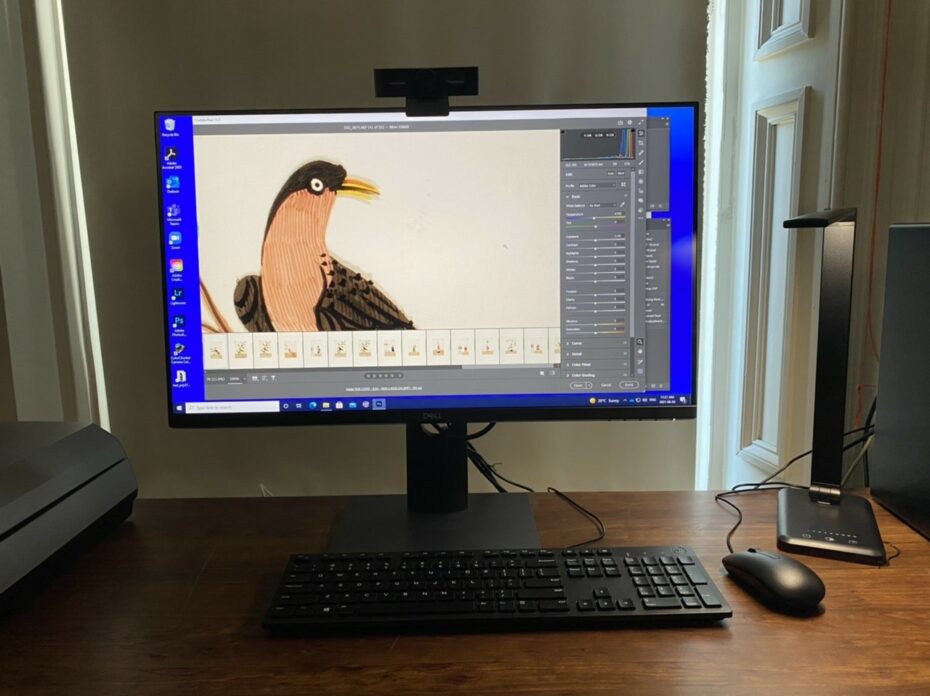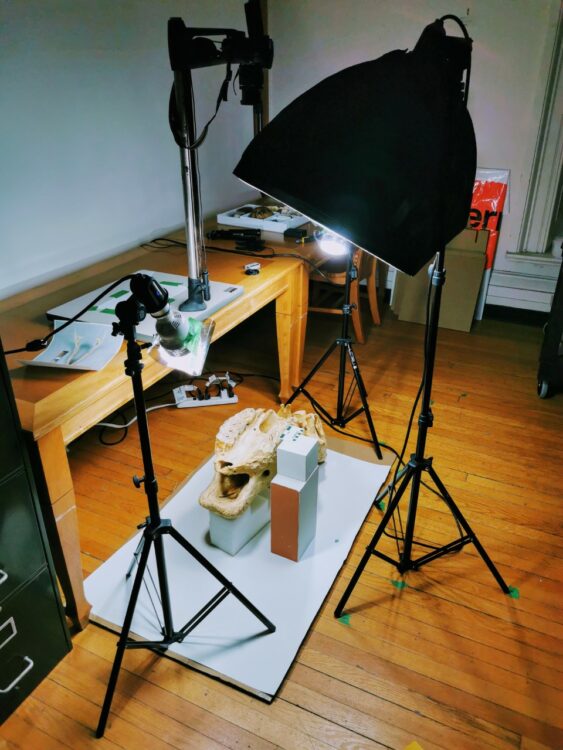
Our Collections and Archives Management Lab (CAML) is a new, federally-funded initiative developed by the Collections team at the Redpath Museum, to preserve and provide greater accessibility to the Museum’s vast collections data. Equipped with new storage units, a small photo studio, a digitization workspace and several working areas, our lab was created to facilitate essential curatorial activities, involving new collections entering the Museum, as well as existing collections currently in house.
As an example, items recently donated or returning from other institutions after having been loaned, need to be placed in quarantine and checked for pests before they can enter the collections storage rooms. The open shelving units are perfect for inspecting specimens and objects without having to handle them when not necessary, and the integrity of the space keeps the retuning material well away from the collections storage spaces, until they can successfully pass the pest management protocols. This ensures both that we efficiently record and track the use of the museum collections, whilst reducing the risk of potentially introducing any damaging circumstances, into the museum.
Digitizing the Redpath’s collections

CAML is also adapted to help us process new donations and catalogue the collections. The small photo studio installed in the lab allows us to produce high quality images of museum objects and specimens in the same location where they are being processed, thus minimizing over handling and moving of the collections.
Currently our team is working on organizing and digitizing a research collection spanning over 50 years. The collection is composed of marine invertebrate shells from localities such as the Sea of Cortez, South Australia and Belize, as well as a collection of Paleozoic fossils fossils from Mill Creek Park, Ohio, USA. Already digitized is a collection of 72 mica paintings from India that date from the 19th century, that were acquired by John Thomas Molson.
Access to all
Not only providing a suitable space to work on cataloguing collections, CAML can accommodate small groups of McGill students working on research projects. In February 2020, the Bab adh-Dhra’ collection of 46 Bronze Age pots from Jordan was studied in the lab as part of an anthropology seminar on materiality. We foresee CAML being very useful for the future of collections-based research projects, within the McGill community and beyond.
In tandem with these exciting developments, the Redpath Museum Collections team is also embarking on a major project to make its collections available online thanks to the Museums Assistance Program (MAP) of the Department of Canadian Heritage.
The MAP grant funding provided the resources and support needed to equip CAML with a digitization station, acquire a new museum-based Collections Management System, as well as hire museum information technicians, to aid us in our goal of sharing our collections data online. Admittedly, this is a huge undertaking that will require some time to accomplish, but we are looking forward seeing this project though to the end and make the collections accessible to all.
Some interesting but lesser-known facts about the Redpath Museum:
- The Redpath Museum at McGill University was opened in 1882 to preserve and display the valuable collections of Sir William Dawson, one of Canada most preeminent natural scientists.
- It is the first purpose-built museum, and one of the oldest museums in Canada.
- There are more than 400,000 specimens in the Natural History Collections and more than 18,000 items in the World Cultures Collections.
- Visiting researchers from all around the world are interested in our collections, and each year, we answer more than 80 collections-based inquiries, and some of the scholars visit us on site to collect data for their research.
- Our collections are featured in blockbuster exhibitions in museums such as the Musée des beaux-arts de Montréal and the Musée de la Civilisation regularly, and even sometimes in movies!
Acknowledgement: We would like to graciously thank the Department of Heritage Canada, as well as the Museums Assistance Program, for providing the funding necessary for the success for this project. It is through such collaborations and fellowships, that we continue to preserve, protect, and share our understanding of the cultural and natural world.

Hi Annie,Glad you are sharing the good news about the digitizations project at the Redpath Museum.It’s especially significant as the museum remains closed to the public since March 2020.
Rosemary Wagner, PhD ABD, Président, Council of the Friends of the Redpath Museum